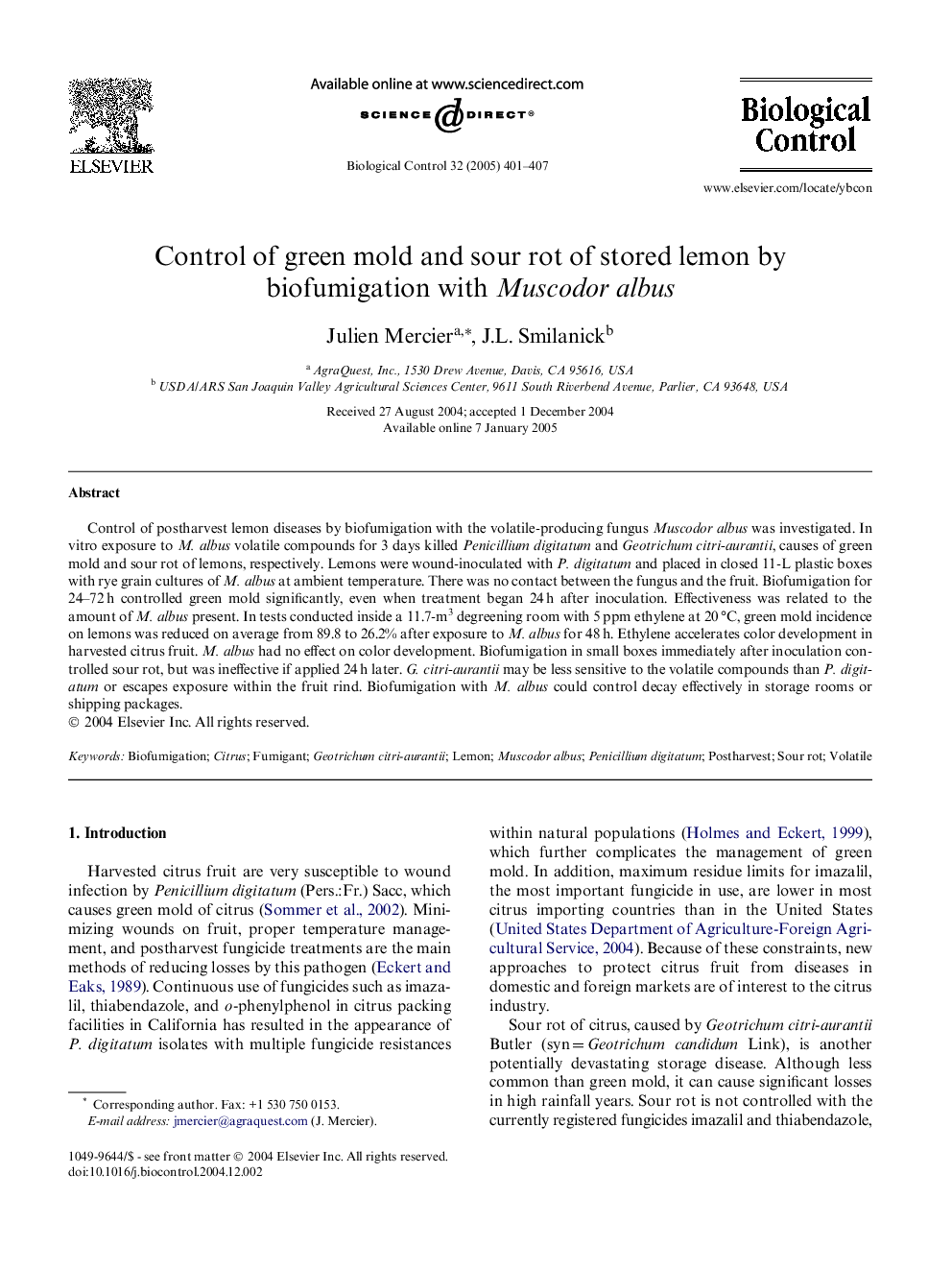| Article ID | Journal | Published Year | Pages | File Type |
|---|---|---|---|---|
| 9471945 | Biological Control | 2005 | 7 Pages |
Abstract
Control of postharvest lemon diseases by biofumigation with the volatile-producing fungus Muscodor albus was investigated. In vitro exposure to M. albus volatile compounds for 3 days killed Penicillium digitatum and Geotrichum citri-aurantii, causes of green mold and sour rot of lemons, respectively. Lemons were wound-inoculated with P. digitatum and placed in closed 11-L plastic boxes with rye grain cultures of M. albus at ambient temperature. There was no contact between the fungus and the fruit. Biofumigation for 24-72 h controlled green mold significantly, even when treatment began 24 h after inoculation. Effectiveness was related to the amount of M. albus present. In tests conducted inside a 11.7-m3 degreening room with 5 ppm ethylene at 20 °C, green mold incidence on lemons was reduced on average from 89.8 to 26.2% after exposure to M. albus for 48 h. Ethylene accelerates color development in harvested citrus fruit. M. albus had no effect on color development. Biofumigation in small boxes immediately after inoculation controlled sour rot, but was ineffective if applied 24 h later. G. citri-aurantii may be less sensitive to the volatile compounds than P. digitatum or escapes exposure within the fruit rind. Biofumigation with M. albus could control decay effectively in storage rooms or shipping packages.
Keywords
Related Topics
Life Sciences
Agricultural and Biological Sciences
Agronomy and Crop Science
Authors
Julien Mercier, J.L. Smilanick,
